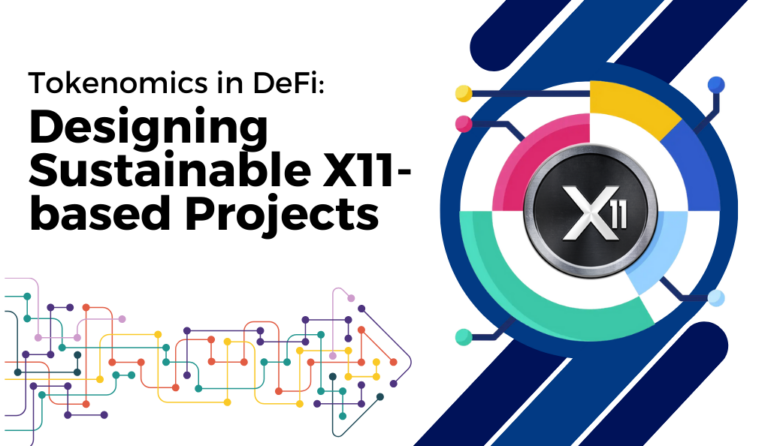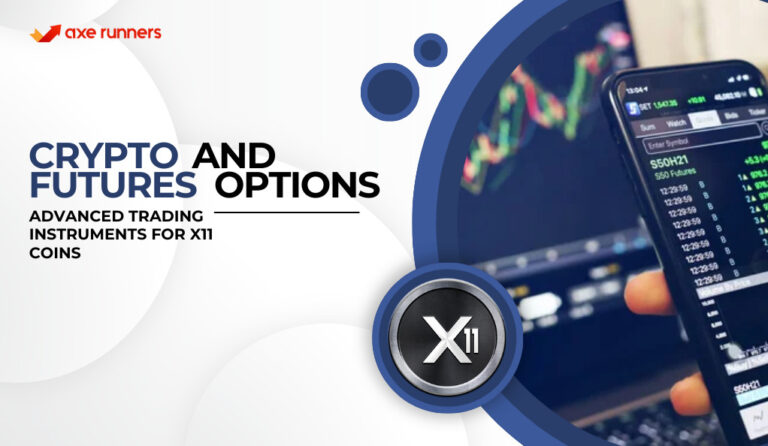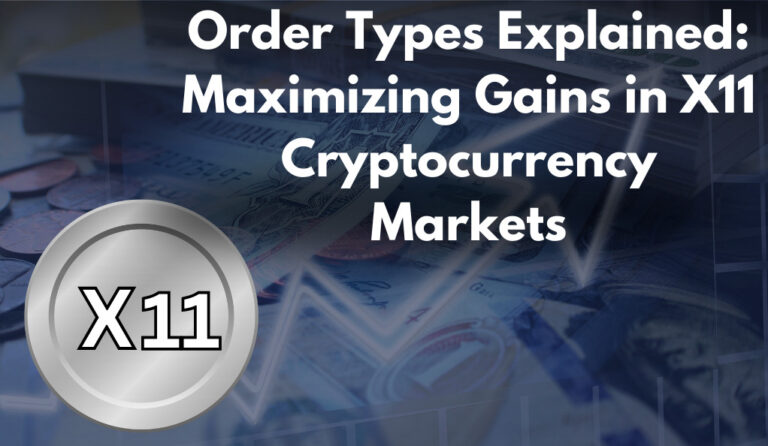The world of cryptocurrency mining is vast and varied, with numerous algorithms at play, each with its unique characteristics. One such algorithm that has garnered significant attention and respect in the crypto community is X11. This section aims to provide a comprehensive introduction to X11 mining, shedding light on its history, significance, and the balance it strikes between security and energy efficiency.
A Brief History of X11
X11 is not just another number in the long list of hashing algorithms; it’s a composite function of 11 different cryptographic algorithms. This chain of algorithms was introduced as a more complex and layered approach to secure transactions and data. The brainchild behind this innovative algorithm is Evan Duffield, who introduced it as the backbone for the cryptocurrency Dash (formerly known as Darkcoin).
Significance of X11 in the Crypto World
The crypto realm values innovation, especially when it addresses prevailing challenges. X11 stood out for several reasons:
- Security: By employing 11 different hashing functions, X11 offers a multi-layered security approach. If one function is compromised, the remaining ten serve as robust backup layers.
- Efficiency: Despite its complexity, X11 is designed to be more energy-efficient than its predecessors, such as SHA-256 used by Bitcoin. This efficiency translates to cooler hardware, longer device lifespans, and reduced electricity costs for miners.
- Adaptability: The multi-algorithm structure of X11 makes it adaptable. If a particular hashing function within X11 becomes obsolete or compromised, it can be replaced without overhauling the entire system.
| Feature | X11 Algorithm | Traditional Algorithms |
|---|---|---|
| Number of Hash Functions | 11 | Typically 1 |
| Energy Consumption | Lower | Higher |
| Hardware Temperature | Cooler | Hotter |
| Security Layers | Multiple | Single |
The table above succinctly captures the essence of X11’s superiority. While traditional algorithms rely on a single hashing function, making them vulnerable to potential breaches, X11’s multi-layered approach ensures that even if a few layers are compromised, the overall system remains secure. Moreover, the energy efficiency of X11 ensures that miners can run their operations for longer durations without the fear of hardware overheating or incurring exorbitant electricity bills.
Understanding X11’s ASIC Resistance
In the ever-evolving landscape of cryptocurrency mining, the term “ASIC” is often met with mixed reactions. Application-Specific Integrated Circuits (ASICs) are specialized hardware designed for a specific task—in this case, cryptocurrency mining. While they offer unparalleled efficiency and power, their dominance has raised concerns about centralization and accessibility. This is where X11’s ASIC resistance comes into play, leveling the playing field for miners.
The ASIC Conundrum
ASICs, by design, are incredibly efficient at what they do. When introduced to the world of cryptocurrency mining, they quickly outperformed traditional CPUs and GPUs. This efficiency, however, came at a cost:
- Centralization: ASICs are expensive. Their introduction meant that only those with deep pockets could afford the best mining equipment, leading to a concentration of mining power in the hands of a few.
- Reduced Accessibility: For enthusiasts and small-scale miners, the high entry cost of ASICs became a barrier. The democratized vision of cryptocurrency was at risk as mining became less about the community and more about capital.
X11’s Stand Against ASIC Dominance
X11 was designed with ASIC resistance in mind. Its complex structure of 11 hashing functions made it difficult for ASIC developers to create a cost-effective solution for X11 mining. This resistance ensured:
- Decentralization: By making it challenging for ASICs to dominate the X11 mining scene, the power was redistributed. More individuals could participate without feeling overshadowed by large mining farms.
- Inclusivity: With ASIC resistance, individuals using traditional GPUs could still participate profitably in the mining process, ensuring that the community’s spirit remained intact.
The Changing Landscape: ASICs and X11
While X11 was initially successful in resisting ASICs, technology, as it always does, evolved. Today, there are ASIC miners designed specifically for X11. However, the legacy of X11’s resistance has left an indelible mark. The crypto community is more aware of the potential pitfalls of ASIC dominance, and many new algorithms are being designed with ASIC resistance in mind.
Choosing the Right Hardware for X11 Mining
The success of any mining operation, regardless of the algorithm in use, hinges significantly on the hardware employed. With X11’s unique structure and requirements, selecting the right equipment becomes even more crucial. In this section, we’ll explore the nuances of choosing the best hardware for X11 mining, comparing the pros and cons of GPUs and ASICs.
GPUs vs. ASICs: The Eternal Debate
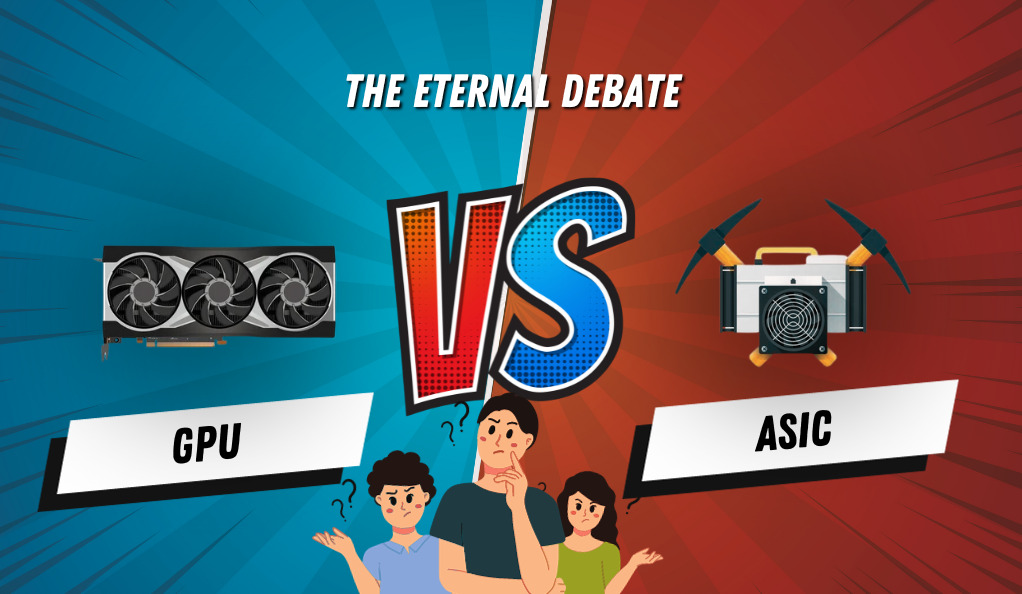
The debate between Graphics Processing Units (GPUs) and Application-Specific Integrated Circuits (ASICs) in the context of cryptocurrency mining is longstanding and nuanced. GPUs, known for their flexibility, can switch between different algorithms, making them a versatile choice for miners. Their initial cost is moderate, and they offer good performance with a relatively longer lifespan due to their general-purpose nature. Additionally, GPUs retain a higher resale value as they can be repurposed for gaming or graphics work. On the other hand, ASICs, designed specifically for a particular algorithm, bring unparalleled efficiency to the table.
Their performance is exceptional, and they consume less power due to their high efficiency. However, this efficiency comes with a higher initial cost, a shorter lifespan due to constant high-performance operation, and a lower resale value since they’re tailored for mining. When choosing between GPUs and ASICs for X11 mining, miners must weigh these factors, considering both their immediate goals and long-term strategy.
Factors Affecting Hardware Performance and Profitability
- Hashrate: This is the speed at which a miner can complete an operation in the cryptocurrency code. A higher hashrate means more mining power and a higher chance of validating a new block.
- Power Consumption: Efficient mining is not just about high performance but also about how much power is consumed to achieve that performance. Lower power consumption means lower electricity bills.
- Durability: Mining is a continuous operation, often running 24/7. The hardware’s durability ensures that it can handle the stress and doesn’t require frequent replacements.
- Cost: The initial investment in mining hardware plays a significant role in determining the ROI (Return on Investment). It’s essential to strike a balance between cost and performance.
- Environment: The hardware’s surrounding environment, including temperature and humidity, can impact its performance. Proper cooling solutions and ventilation are crucial.
Making the Choice: GPU or ASIC for X11 Mining?
While ASICs offer unparalleled performance, especially for algorithms like X11, they come with a higher initial cost and less flexibility. GPUs, on the other hand, offer a balanced approach, especially for those new to mining or those looking for versatility in their mining operations.
For large-scale operations where profitability is the sole focus, investing in X11-specific ASICs might be the way to go. However, for hobbyists, enthusiasts, or those looking for a more balanced approach, GPUs offer a compelling choice.
Efficient Power Consumption and Management
In the realm of cryptocurrency mining, power isn’t just about the computational might of your hardware—it’s also about the electricity that fuels it. Efficient power consumption and management can significantly influence the profitability and sustainability of your mining operations. In this section, we’ll delve into the intricacies of power in the context of X11 mining and offer strategies to optimize it.
The Power Equation in Mining
Cryptocurrency mining, at its core, is a power-intensive process. The continuous calculations and validations demand a lot from the hardware, translating to high electricity consumption. The equation is simple: the more power you consume, the higher your operational costs. And as electricity prices vary globally, miners in regions with higher tariffs face steeper challenges in ensuring profitability.
Tips to Reduce Power Usage Without Compromising Performance
- Optimized Hardware Settings: Both GPUs and ASICs often come with settings that allow users to tweak performance. Underclocking, for instance, can reduce power consumption while only slightly affecting hashrate.
- Effective Cooling Solutions: Overheating hardware not only consumes more power but also risks damage. Invest in efficient cooling solutions like quality fans or even liquid cooling systems.
- Scheduled Mining: Instead of running your mining operations 24/7, consider scheduling them during off-peak hours when electricity might be cheaper.
- Use Energy-Efficient PSUs: The Power Supply Unit (PSU) plays a crucial role in a mining rig. Opt for 80 PLUS certified PSUs that guarantee energy efficiency.
- Regular Maintenance: Dust and debris can hinder airflow and cooling, making your hardware work harder and consume more power. Regular cleaning and maintenance can prevent this.
Monitoring Power Consumption
It’s essential to keep a close eye on your mining rig’s power consumption. Several tools and software solutions provide real-time data on electricity usage, helping miners make informed decisions. By monitoring power consumption, miners can identify inefficiencies and address them promptly.
The Role of Renewable Energy in Mining
With growing concerns about the environmental impact of cryptocurrency mining, many miners are turning to renewable energy sources. Solar or wind-powered mining operations can significantly reduce electricity costs and carbon footprints. While the initial setup might be costly, the long-term benefits in terms of sustainability and profitability are substantial.
Selecting Profitable X11 Coins and Pools
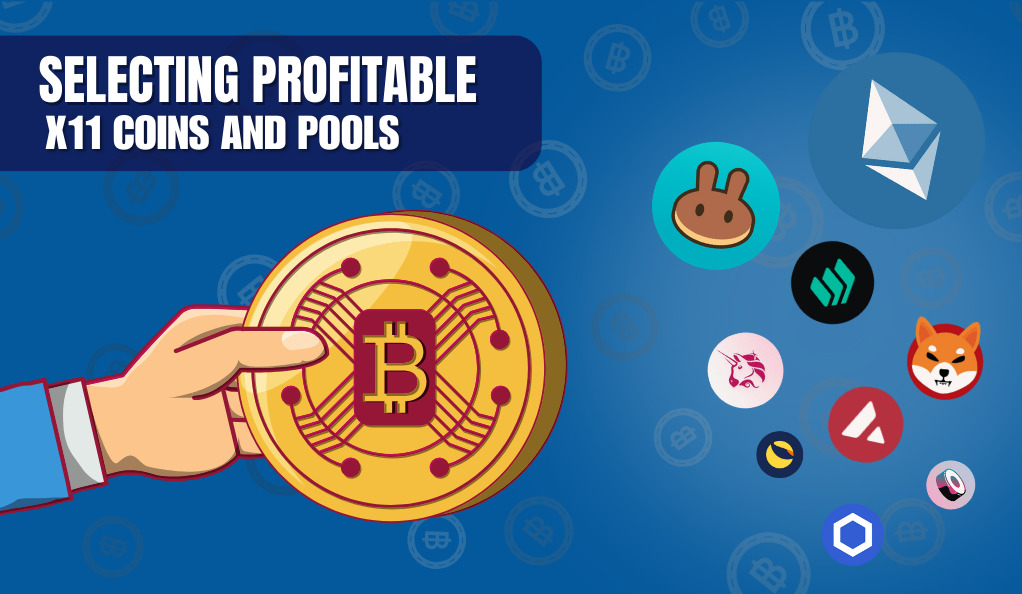
The world of cryptocurrency is vast, with numerous coins vying for attention. While Bitcoin remains the most recognized name, several other coins, especially those based on the X11 algorithm, offer lucrative mining opportunities. However, the profitability of mining isn’t solely determined by the coin itself. The mining pool you choose plays a significant role. In this section, we’ll guide you through the process of selecting the most profitable X11 coins and the right mining pools.
Overview of Popular X11 Coins
Dash: Originally known as Darkcoin, Dash is the poster child for X11 coins. With its focus on fast transactions and privacy, Dash has carved a niche for itself in the crypto market.
Pura: An international digital currency, Pura emphasizes eco-friendly solutions and donates a portion of its mining rewards to environmental causes.
CannabisCoin: As the name suggests, this coin is tailored for the legalized cannabis industry, simplifying transactions in this niche market.
StartCoin: Aimed at crowdfunding projects, StartCoin rewards users for holding onto their coins and supporting projects.
Evaluating Mining Pools for Maximum Returns
Mining pools are collective groups of miners who combine their computational power to increase the chances of validating a block. The rewards are then distributed based on each miner’s contribution. Here’s what to consider when choosing a pool:
- Pool Size: Larger pools offer more frequent rewards, albeit smaller ones. Smaller pools offer larger rewards but less frequently.
- Fee Structure: Most pools charge a fee, typically ranging from 0-3%. Ensure you’re aware of these charges as they directly impact profitability.
- Reliability: The pool’s uptime is crucial. If the pool server is down, you’re not mining and not earning.
- Reputation: Engage with the community to gauge the reputation of a pool. Trustworthy pools are more likely to distribute rewards fairly.
- Payout System: Pools use various systems like PPS (Pay Per Share), PROP (Proportional), or PPLNS (Pay Per Last N Shares). Understand these to know how and when you’ll be rewarded.
- Minimum Payout: Some pools have a minimum payout threshold. If you’re a small-scale miner, it might take a while to reach this threshold in larger pools.
Diversifying Your Mining Portfolio
Just as investors diversify their investment portfolios, miners can diversify their mining activities. Instead of focusing solely on one coin, consider mining multiple X11 coins based on market trends, difficulty, and potential returns. Tools like mining calculators can help determine the potential profitability of various coins.
Software and Tools for X11 Mining
Mining is as much a software game as it is a hardware one. The right software can optimize your mining operations, ensuring that your hardware works at its peak efficiency and that you’re getting the most out of your mining venture. In this section, we’ll explore the various software options available for X11 mining and delve into some essential tools that can enhance your mining experience.
Introduction to Mining Software and OS Options
Mining software acts as the intermediary between your hardware and the blockchain. It manages your hardware’s operations, ensuring that it’s hashing at its best, and communicates with the network to validate and record transactions.
Popular X11 Mining Software:
- SGMiner: A versatile GPU miner that supports a wide range of algorithms, including X11. It’s open-source and offers a lot of customization options for seasoned miners.
- CCMiner: Tailored for Nvidia GPUs, this software is known for its user-friendly interface and robust performance.
- BFGMiner: While it’s more popular for Bitcoin mining, BFGMiner offers support for X11 and is known for its advanced features and monitoring capabilities.
- Awesome Miner: A comprehensive solution that supports multiple mining engines and algorithms, including X11. It’s suitable for both beginners and experts.
Importance of Regular Software Updates and Patches
Just like any other software, mining applications receive regular updates. These updates can offer:
- Performance Enhancements: Optimizations that allow your hardware to mine more efficiently.
- Security Patches: Fixes for vulnerabilities that could compromise your mining operations or rewards.
- New Features: Tools or functionalities that can enhance your mining experience.
Staying updated ensures that you’re always getting the best out of your mining software and that your operations are secure.
Essential Tools for X11 Miners
- Mining Calculators: Before diving into mining a particular X11 coin, use a mining calculator to estimate potential profits based on your hardware, electricity costs, and the coin’s current value.
- Hardware Monitoring Tools: Software like HWMonitor or MSI Afterburner can provide real-time data on your hardware’s performance, temperature, and power consumption.
- Pool Monitoring: If you’re mining in a pool, many offer dedicated tools or dashboards that allow you to monitor your contributions, rewards, and the pool’s overall performance.
- Wallets: Ensure you have a secure and reliable wallet for your X11 coins. Some popular options include Dash Core Wallet for Dash or Coinomi for a multi-coin solution.
Monitoring and Maintenance of X11 Mining Operations
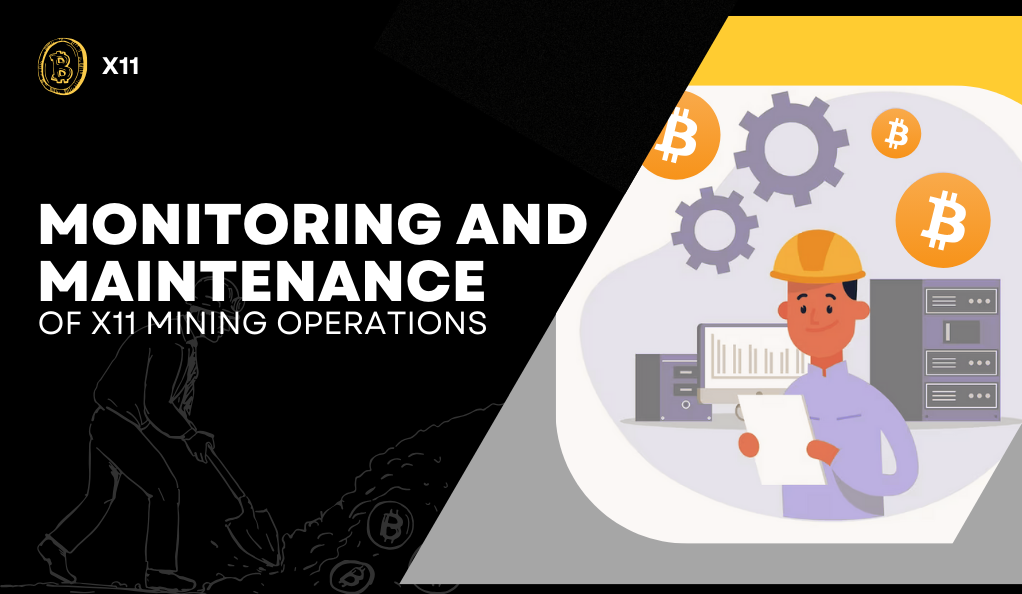
The journey of a miner doesn’t end once the rigs are set up and the software is installed. Continuous monitoring and regular maintenance are essential to ensure that the mining operations run smoothly, efficiently, and profitably. In this section, we’ll delve into the importance of these practices and provide insights on how to effectively monitor and maintain your X11 mining setup.
The Importance of Regular Hardware Checks
Mining is a relentless task for your hardware. The continuous operations can lead to wear and tear, and without regular checks, minor issues can escalate into major problems. Here’s why regular hardware checks are crucial:
- Early Detection of Issues: From failing fans to malfunctioning GPUs, early detection can prevent bigger problems and potential downtimes.
- Optimized Performance: Ensuring that all components are working at their peak efficiency can lead to better hash rates and, consequently, better rewards.
- Extended Hardware Lifespan: Addressing issues promptly can extend the life of your hardware, ensuring that you get the most out of your initial investment.
Tools and Practices for Monitoring Mining Performance
- Dedicated Monitoring Software: Tools like MinerStat or Hive OS provide real-time insights into your mining operations, from hash rates and temperature to power consumption.
- Remote Monitoring: If you’re not always near your mining setup, consider solutions that allow remote monitoring. Many modern mining software options come with mobile apps or web dashboards that can be accessed from anywhere.
- Alert Systems: Set up alerts for potential issues. Whether it’s a drop in hash rate, an increase in temperature, or a connectivity issue, immediate notifications can help you address problems promptly.
- Regular Backups: Ensure that you regularly back up your mining software configurations and wallet details. In case of software failures or other issues, backups can help you get back on track quickly.
Routine Maintenance Practices
- Cleaning: Dust and debris can accumulate in your mining rigs, leading to reduced airflow and increased temperatures. Regular cleaning can prevent this.
- Software Updates: As discussed in the previous section, always ensure that your mining software and OS are up-to-date.
- Hardware Upgrades: Technology evolves rapidly. Keep an eye on the market for potential hardware upgrades that can boost your mining performance.
- Electrical Checks: Ensure that all electrical connections are secure and that there’s no risk of short circuits or overloads.
Conclusion: The Future of X11 Mining
As the cryptocurrency landscape continuously evolves, X11 mining stands at a pivotal juncture, poised to embrace both challenges and opportunities. Technological advancements promise increased efficiency with new ASICs tailored for X11, while the broader shift towards sustainability positions X11 as a leader in eco-friendly mining. The crypto community’s emphasis on decentralization will further reinforce X11’s foundational vision, and as more coins potentially adopt this algorithm, miners will have a diverse array of options. However, with change being the only constant in the crypto realm, miners must remain agile, especially with potential regulatory shifts on the horizon.
Staying ahead in the X11 mining game will require adaptability and a keen sense of emerging trends. Whether it’s hardware adjustments, exploring new coins, or navigating regulatory waters, the ability to pivot will define future success. Engaging with the community, participating in forums, and keeping an ear to the ground will be invaluable. In this dynamic dance of algorithms, hardware, and market forces, the future shines brightly for those ready to embrace change and innovate, solidifying the promising potential of X11 mining.
At axerunners.com, our goal is to furnish well-rounded and trustworthy information regarding cryptocurrency, finance, trading, and stocks. Nonetheless, we avoid providing financial advice and instead encourage users to conduct their own research and meticulous verification.
Read More






